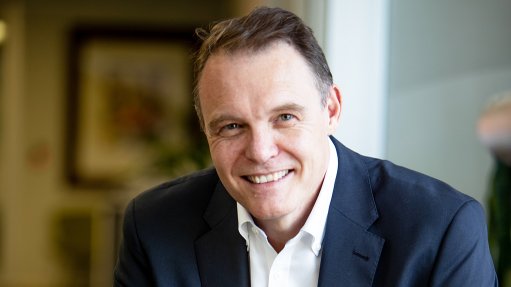DBSA advances water infrastructure delivery through SADC Water Fund
Meant to ensure the sustainable use and management of water resources in the region, the Southern African Development Community (SADC) Water Fund has had to, like many other industries, face the reality of climate change by adapting to the challenge of building resilience within the water sector and mitigating against obstacles.
Water resources are finite and there is extremely limited access to water and sanitation across the African continent, as with many global regions, while such resources are also integral to enabling sustainable energy and food production, amongst others, which is an issue the Water Fund must face.
The SADC Water Fund therefore focuses on sustainably financing projects that address, promote and support strategic transboundary and pro-poor water supply and sanitation infrastructure in the SADC region, as well as promotes climate resilience in the sector and facilitates the application of Integrated Water Resources Management principles in infrastructure development.
The Fund addresses these through the steward-ship of the Development Bank of Southern Africa (DBSA), who hosts the fund and is its project executing agency.
This allows the Fund to leverage the bank’s institutional capacities and promote synergies within DBSA’s other activities.
In terms of mobilising financing, DBSA regional fund manager Graham Ching’ambu says the Fund “recognises that money is not the only thing that is necessary to deal with the challenges”, as the Fund is required to consider regulatory environments, legislation, cost reflective tariffs and other mechanisms that allow for shared infrastructure within the region, while simultaneously working with partners to support and promote these approaches.
“We have to deal with each specific case and think about how to mix up the various funding instruments in order to see the success of projects, which is critical to ensure that we can implement those projects,” he adds, noting that “development impact and shared prosperity only becomes a reality when there is actual implementation of projects that are prioritised within the region”.
In that regard, the Fund currently has an active pipeline of more than $100-million in projects that it is looking to develop and see implemented within the region.
DBSA infrastructure programme management services head Mamarinyana Ratsaka, meanwhile, emphasizes the importance of having partners in achieving the Fund’s objectives, as it is not able to do so alone.
Ching’ambu adds that the increasing awareness of water scarcity, alongside aging infrastructure, further enable the Fund to continuously and consistently get the right level of investment in the sector to deal with water challenges.
“Before the Fund, there was no institutional structure for partners to be able to engage in terms of channelling resources towards priority transboundary projects in the region. The establishment of the Fund has responded to this need, and it now sits with a pipeline of projects that exceeds the current amount of funds that we have, which is a good problem to have, but also demonstrates the need for an institutional structure,” he explains.
Current projects taking place under the SADC Water Fund umbrella include the €9.8-million Kazungula project, in Zambia, and the €25-million Lona project, in Mozambique.
Phase 1 of the Kazungula project, valued at €3.5-million, focuses on upgrading existing water treatment works, transmission mains and storage, rehabilitation and expansion of the distribution network.
Phase 2, valued at €6.3-million, will focus on sewerage and sanitation infrastructure, as well as the expansion for water distribution, rehabilitation and expansion and the sewer network.
By 2030, about 12 500 people are expected to benefit from the project.
The cross-border Lona project’s first phase, valued at €13-million, will focus on advancing works to pump water from the water treatment plant at Simunye, through Lomahasha, both in eSwatini, to the Namaacha reservoirs in Mozambique. The water source is the Umbeluzi river and will see works including transmission and bulk supply lines, booster pump stations, reservoirs, and the expansion of the distribution network.
Phase 2, totaling €12-million, will include the construction of the new Pinde dam on the Sabasangue river on the Mozambican side.
By 2024, about 46 500 people will have access to potable water owing to the project.
Tel: +27 11 313 3911
Email: webmaster@dbsa.org
Website: www.dbsa.org
Article Enquiry
Email Article
Save Article
Feedback
To advertise email advertising@creamermedia.co.za or click here
Comments
Press Office
Announcements
What's On
Subscribe to improve your user experience...
Option 1 (equivalent of R125 a month):
Receive a weekly copy of Creamer Media's Engineering News & Mining Weekly magazine
(print copy for those in South Africa and e-magazine for those outside of South Africa)
Receive daily email newsletters
Access to full search results
Access archive of magazine back copies
Access to Projects in Progress
Access to ONE Research Report of your choice in PDF format
Option 2 (equivalent of R375 a month):
All benefits from Option 1
PLUS
Access to Creamer Media's Research Channel Africa for ALL Research Reports, in PDF format, on various industrial and mining sectors
including Electricity; Water; Energy Transition; Hydrogen; Roads, Rail and Ports; Coal; Gold; Platinum; Battery Metals; etc.
Already a subscriber?
Forgotten your password?
Receive weekly copy of Creamer Media's Engineering News & Mining Weekly magazine (print copy for those in South Africa and e-magazine for those outside of South Africa)
➕
Recieve daily email newsletters
➕
Access to full search results
➕
Access archive of magazine back copies
➕
Access to Projects in Progress
➕
Access to ONE Research Report of your choice in PDF format
RESEARCH CHANNEL AFRICA
R4500 (equivalent of R375 a month)
SUBSCRIBEAll benefits from Option 1
➕
Access to Creamer Media's Research Channel Africa for ALL Research Reports on various industrial and mining sectors, in PDF format, including on:
Electricity
➕
Water
➕
Energy Transition
➕
Hydrogen
➕
Roads, Rail and Ports
➕
Coal
➕
Gold
➕
Platinum
➕
Battery Metals
➕
etc.
Receive all benefits from Option 1 or Option 2 delivered to numerous people at your company
➕
Multiple User names and Passwords for simultaneous log-ins
➕
Intranet integration access to all in your organisation





















